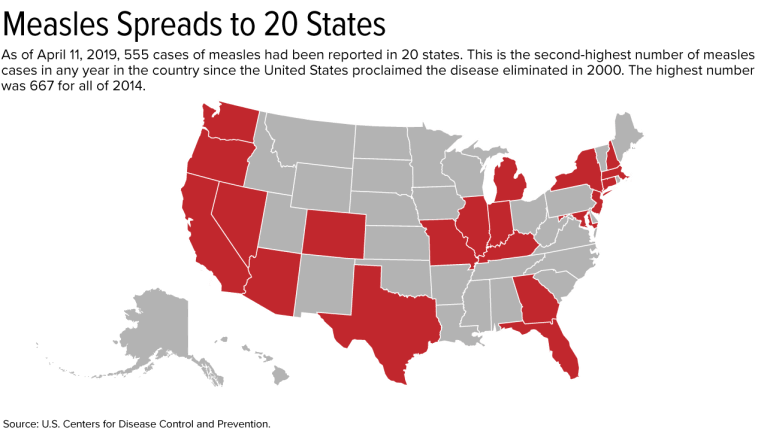Changes are coming to paid leave. Here’s what employers should know
Many states and local governments are enacting their own paid leave policies, making it difficult for employers to navigate employee paid leave. Read this blog post for what employers should know about the coming changes for paid leave.
A growing number of states and local governments are enacting their own paid leave policies. These new changes can be difficult for employers to navigate if they don’t understand the changes that are happening.
Adding to the confusion among employers, paid sick leave and paid family leave are often used interchangeably, when in fact there are some important distinctions. Paid sick leave is for a shorter time frame than paid family leave and allows eligible employees to care for their own or a family member’s health or preventative care. Paid family leave is more extensive and allows eligible employees to care for their own or a family member’s serious health condition, bond with a new child or to relieve family pressures when someone is called to military service.
The best-known type of employee leave is job-protected leave under the Family Medical Leave Act, where employees can request to take family medical leave for their own or a loved one’s illness, or for military caregiver leave. However, leave under FMLA is unpaid, and in most cases, employees may use available PTO or paid leave time in conjunction with family medical leave.
Rules vary by state, which makes it more difficult for multi-state employers to comply. The following is an overview of some new and changing state and local paid leave laws.
Paid sick leave
The states that currently have paid sick leave laws in place are Arizona, California, Connecticut, Maryland, Massachusetts, New Jersey, Oregon, Rhode Island, Vermont and Washington. There are also numerous local and city laws coming into effect across the country.
In New Jersey, the Paid Sick Leave Act was enacted late last year. It applies to all New Jersey businesses regardless of size; however, public employees, per diem healthcare employees and construction workers employed pursuant to a collective bargaining agreement are exempt. As of February 26, New Jersey employees could begin using accrued leave time, and employees who started after the law was enacted are eligible to begin using accrued leave 120 days after their hire dates.
Michigan’s Paid Medical Leave Act requires employers with 50 or more employees to provide paid leave for personal or family needs as of March.
Under Vermont’s paid sick leave law, this January, the number of paid sick leave hours employees may accrue rose from 24 to 40 hours per year.
In San Antonio, a local paid sick leave ordinance passed last year, but it may not take effect this August. The ordinance mirrors one passed in Austin that has been derailed by legal challenges from the state. Employers in these cities should watch these, closely.
Paid family leave
The five states that currently have paid family leave policies are California, New Jersey, Rhode Island, New York, Washington and the District of Columbia.

New York, Washington and D.C. all have updates coming to their existing legislation, and Massachusetts will launch a new paid family program for employers in that state. In New York, the state’s paid family leave program went into effect in 2018 and included up to eight weeks of paid family leave for covered employees. This year, the paid leave time jumps to 10 weeks. Payroll deductions to fund the program also increased.
Washington’s paid family leave program will begin on January 1, 2020, but withholding for the program started on January 1 of this year. The program will include 12 weeks of paid family leave, 12 weeks of paid medical leave. If employees face multiple events in a year, they may be receive up to 16 weeks, and up to 18 weeks if they experience complications during pregnancy.
The paid family leave program in Massachusetts launches on January 1, 2021, with up to 12 weeks of paid leave to care for a family member or new child, 20 weeks of paid leave for personal medical issues and 26 weeks of leave for an emergency related to a family member’s military deployment. Payroll deductions for the program start on July 1.
The Paid Leave Act of Washington, D.C. will launch next year with eight weeks of parental leave to bond with a new child, six weeks of leave to care for an ill family member with a serious health condition and two weeks of medical leave to care for one’s own serious health condition. On July 1, the district will begin collecting taxes from employers, and paid leave benefits will be administered as of July 1, 2020.
Challenging times ahead
An employer must comply with all state and local sick and family leave laws, and ignorance of a law is not a defense. Employers must navigate different state guidelines and requirements for eligibility no matter how complex, including multi-state employers and companies with employees working remotely in different jurisdictions.
These state paid leave programs are funded by taxes, but employers must cover the costs of managing the work of employees who are out on leave. While generous paid leave policies can help employers attract talent, they simply don’t make sense for all companies. For example, it can be difficult for low-margin businesses to manage their workforces effectively when employees can take an extended paid leave.
Not only must employers ensure compliance with state and local rules, but they also must make sure that their sick time, family and parental leave policies are non-discriminatory and consistent with federal laws and regulations. That’s a lot to administer.
Employers should expect to see the changes in paid sick leave and family leave laws to continue. In the meantime, companies should make sure they have the people and internal processes in place right now to track these changes and ensure compliance across the board.
SOURCE: Starkman, J.; Johnson, D. (2 May 2019) "Changes are coming to paid leave. Here’s what employers should know" (Web Blog Post). Retrieved from https://www.benefitnews.com/opinion/what-employers-need-to-know-about-changing-paid-leave-laws?brief=00000152-14a7-d1cc-a5fa-7cffccf00000
Employers Must Report 2017 and 2018 EEO-1 Pay Data
The Equal Employment Opportunity Commission (EEOC) is requiring that all employers report their pay data, broken down by race, sex and ethnicity, from 2017 and 2018 by September 30. Continue reading this post from the SHRM to learn more.
The Equal Employment Opportunity Commission (EEOC) has announced that employers must report pay data, broken down by race, sex and ethnicity, from 2017 and 2018 payrolls. The pay data reports are due Sept. 30.
Employers had been waiting to learn what pay data they would need to file—if any at all—as litigation on the matter ensued. A federal judge initially ordered the EEOC to collect employee pay data for 2018. The National Women's Law Center (NWLC) and other plaintiffs wanted the EEOC to collect two years of data, as the agency was supposed to under a new regulation before the government halted the collection in 2017.
Judge Tanya Chutkan of the U.S. District Court for the District of Columbia sided with the plaintiffs and gave the EEOC the option of collecting 2017 pay data along with the 2018 information by the Sept. 30 deadline or collecting 2019 pay data during the 2020 reporting period. The EEOC opted to collect the 2017 data.
The agency said it could make the collection portal available to employers by mid-July and would provide information and training to employers prior to that date.
Immediate Steps
"We are awaiting confirmation from the EEOC or the contractor it is hiring to facilitate the pay-data collection on how to lay out the data file for a batch upload," said Alissa Horvitz, an attorney with Roffman Horvitz in McLean, Va.
But employers should take some steps immediately. They should reach out to their subject-matter and technical experts and pull together resources to ensure that the required data components can be captured, analyzed and reported by Sept. 30, said Annette Tyman, an attorney with Seyfarth Shaw in Chicago.
Filing the additional reports will impose unanticipated burdens for HR, IT and legal departments, as well as third-party consultants, she noted. "It is unclear whether any further litigation options will impact the Sept. 30 deadline, and we are instructing employers to assume they must comply."
Employers should keep in mind that they still must submit their 2018 data for Component 1 of the EEO-1 form by May 31, unless they request an extension. Note that the EEOC recently shortened the extension period for employers to report Component 1 data from 30 days to two weeks. So the extension deadline is now June 14.
Component 1 asks for the number of employees who work for the business by job category, race, ethnicity and sex. Component 2 data—which includes hours worked and pay information from employees' W-2 forms by race, ethnicity and sex—is the subject of the legal dispute.
Data Collection
Businesses with at least 100 employees and federal contractors with at least 50 employees and a contract with the federal government of $50,000 or more must file the EEO-1 form. The EEOC uses information about the number of women and minorities companies employ to support civil rights enforcement and analyze employment patterns, according to the agency.
The revised EEO-1 form will require employers to report wage information from Box 1 of the W-2 form and total hours worked for all employees by race, ethnicity and sex within 12 proposed pay bands.
The reported hours worked should show actual hours worked by nonexempt employees and an estimated 20 hours per week for part-time exempt employees and 40 hours per week for full-time exempt employees.
"Filling out the added data in the EEO-1 form will present a large amount of work, especially as there's great potential for human error when populating the significantly expanded form," said Arthur Tacchino, J.D., chief innovation officer at SyncStream Solutions, which provides workplace compliance solutions.
Employers should start looking at their data now and conduct an initial assessment of their systems, said Camille Olson, an attorney with Seyfarth Shaw in Chicago. Identify the systems that house the relevant demographic, pay and hours-worked data and determine how to pull the information together, she said.
Pulling EEO-1 data is much simpler for Component 1, she noted, because it only involves reporting the employer's headcount by race, ethnicity and sex—whereas collecting pay information involves more data points. Additionally, employers may use different vendor systems at different locations, some employees may have only worked for part of the year, and other employees may have been reclassified to exempt or nonexempt.
"Employers may want to inquire with their current vendors—payroll or otherwise—or look for outside vendors that may be able to assist them with this reporting requirement," Tacchino said.
Under some circumstances, employers may be able to seek an exemption (at the EEOC's discretion) if filing the information would cause an undue burden. "Mega employers" may not be able to show an undue burden, but this could be an option for smaller businesses, said Jim Paretti, an attorney with Littler in Washington, D.C. But that will depend on how the parties decide to move forward.
The Court Battle
The EEO-1 form was revised during President Barack Obama's administration to add the Component 2 data, but the pay-data provisions were suspended in 2017 by President Donald Trump's administration. The NWLC challenged the Trump administration's hold on the pay-data collection provisions, and on March 4, Chutkan lifted the stay—meaning the federal government needed to start collecting the information.
On March 18, however, the EEOC opened the portal for employers to submit EEO-1 reports without including the pay-data questions. Chutkan subsequently told the government to come up with a plan.
The EEOC proposed the Sept. 30 deadline for employers to submit Component 2 data, claiming that the agency needed more time to address the associated collection challenges. Furthermore, the EEOC's chief data officer warned that rushing the data collection may yield poor quality data. Even with the additional time, the agency said it would need to spend more than $3 million to hire a contractor to provide the appropriate procedures and systems.
Robin Thurston, an attorney with Democracy Forward and counsel for the plaintiffs, said at an April 16 hearing that the plaintiffs don't want the agency to compromise quality. But they also wanted "sufficient assurances" that the EEOC will collect the data by Sept. 30.
On April 25, Chutkan ordered the government to provide the court and the plaintiffs with periodic updates on the EEOC's progress and to continue collection efforts until a certain threshold of employer responses has been received.
SOURCE: Nagele-Piazza, L. (2 May 2019) "Employers Must Report 2017 and 2018 EEO-1 Pay Data" (Web Blog Post). Retrieved from https://www.shrm.org/resourcesandtools/legal-and-compliance/employment-law/pages/eeo-1-pay-data-report-2017-2018.aspx
Can Employers Require Measles Vaccines?
Can employers require that their employees get the measles vaccine? The recent measles outbreak is raising the question of whether employers can require that their workers get the vaccine. Read this blog post from SHRM to learn more.
The recent measles outbreak, resulting in mandatory vaccinations in parts of New York City, raises the question of whether employers can require that workers get the vaccine to protect against measles, mumps and rubella (MMR) or prove immunity from the illness.
The answer generally is no, but there are exceptions.
Offices and manufacturers probably can't require vaccination or proof of immunity because the Americans with Disabilities Act (ADA) generally prohibits medical examinations—unless the employer is in a location like Williamsburg, the neighborhood in Brooklyn where vaccinations are now mandatory. Health care providers, schools and nursing homes, however, probably can require them because their employees work with patients, children and people with weak immune systems who risk health complications from measles.
But even these employers must try to find accommodations for workers who object to vaccines for a religious reason or because of a disability that puts them at risk if they're vaccinated, such as having a weak immune system.
Proof of Immunity
Proof of immunity includes one of the following:
- Written documentation of adequate vaccination.
- Laboratory evidence of immunity.
- Laboratory confirmation of measles.
- Birth before 1957. The measles vaccine first became available in 1963, so those who were children before the late 1950s are presumed to have been exposed to measles and be immune.
Measles, which is contagious, typically causes a high fever, cough and watery eyes, and then spreads as a rash. Measles can lead to serious health complications, especially among children younger than age 5. One or two out of 1,000 people who contract measles die, according to the U.S. Centers for Disease Control and Prevention.
Outbreak Has Spread to 20 States
As of April 11, 555 cases have been reported in the United States this year. This is the second-greatest number in any year since the United States proclaimed measles eliminated in 2000; 667 cases were reported in all of 2014.
On April 9, New York City Mayor Bill de Blasio declared a public health emergency in Williamsburg, requiring the MMR vaccine in that neighborhood. Those who have not received the MMR vaccine or do not have evidence of immunity may be fined $1,000.
Since the outbreak started, 285 cases have been confirmed in Williamsburg, including 21 hospitalizations and five admissions to intensive care units.
If a city requires vaccinations, an employer's case for requiring them is much stronger, said Robin Shea, an attorney with Constangy, Brooks, Smith & Prophete in Winston-Salem, N.C. But employers usually should not involve themselves in employees' health care unless they are making an inquiry related to a voluntary wellness program, or the health issue is job-related, she cautioned.
The measles outbreak has spread this year to 20 states—outbreaks linked to travelers who brought measles to the U.S. from other countries, such as Israel, Ukraine and the Philippines, where there have been large outbreaks.
Strike the Right Balance
Health care employers typically require vaccinations or proof of immunity as a condition of employment, said Howard Mavity, an attorney with Fisher Phillips in Atlanta. He noted that most schoolchildren must be immunized, so many employees can show proof of immunity years later.
If an employee provides current vaccination records when an employer asks, the ADA requires that those records be kept in separate, confidential medical files, noted Meredith Shoop, an attorney with Littler in Cleveland.
All employers must balance their health and safety concerns with the right of employees with disabilities to reasonable accommodations under the ADA and the duty to accommodate religious workers under Title VII of the Civil Rights Act of 1964.
Under the ADA, a reasonable accommodation is required unless it would result in an undue hardship or direct threat to the safety of the employee or the public. The direct-threat analysis will be different for a registered nurse than for someone in a health care provider's billing department, for example, who might not work around patients.
Even if the ADA permitted mandatory vaccines in a manufacturing setting in limited circumstances, such as in Williamsburg now, any vaccination orders may need to be the subject of collective bargaining if the factory is unionized. Shoop has seen manufacturers shut down because employees were reluctant to come to work when their co-workers were sick on the job.
An employer does not have to accommodate someone who objects to a vaccine merely because he or she thinks it might do more harm than good but doesn't have an ADA disability or religious objection, said Kara Shea, an attorney with Butler Snow in Nashville, Tenn.
If someone claims to have a health condition that makes getting vaccinated a health risk, the employer does not have to take the person's word for it. The employer instead should ask the person to sign a consent form allowing the employer to learn about the condition and get documentation from the employee's doctor, she said. Before accommodating someone without an obvious impairment, the ADA allows employers to require medical documentation of the disability.
Courts don't closely scrutinize religious objections to immunizations, Mavity remarked.
"Some people have extremely strong beliefs that they don't want a vaccine in their body," said Kathy Dudley Helms, an attorney with Ogletree Deakins in Columbia, S.C. If the employer works with vulnerable people but can't find an accommodation for a worker who refuses vaccination, the employee may have to work elsewhere, she said.
SOURCE: SHRM (17 April 2019) "Can Employers Require Measles Vaccines?" (Web Blog Post). Retrieved from https://www.shrm.org/resourcesandtools/legal-and-compliance/employment-law/pages/measles-outbreak-2019-vaccinations.aspx
Background Screenings and Second Chance Employment - 3 Tips for Success
According to a 2012 SHRM survey, nearly seven out of 10 companies reported that they conduct criminal background checks on all job candidates. Employers today may choose to run background screenings on job applicants for numerous reasons. Continue reading to learn more.
Today’s employers may choose to run background checks on job applicants for variety of reasons. Concerns about negligent hiring, verifying a candidate’s honesty and accountability, and other safety- or performance-related issues may all play a part in this decision. In fact, according to SHRM's 2012 survey, nearly 7 out of 10 companies report that they conduct criminal background checks on all job candidates.
Understandably, employers want to do everything they can to protect their businesses and to ensure (as much as possible) that they’re also protecting their employees. And while an interview is an important opportunity to learn about a job candidate’s character and experience, a background screen provides tangible and practical verification of a candidate’s past, and that is reassuring. What’s important to keep in mind is that background screens are most effective when they’re used judiciously and carefully. Here are a few suggestions to consider.
- Tailor background screens to search for information relevant to the specific responsibilities of the job. While it can be tempting to want to know all the information available about a candidate’s past, the ethical and legal use of background screens means that a motor vehicle report, for example, isn’t relevant for a candidate who won’t be driving as part of their job. Limiting searches to the information that is most relevant to the execution of the job functions will keep you in EEOC compliance and will yield more effective background screens.
- Use a professional background screening company to assist you. There are many excellent and affordable screening companies to choose from, and we at Dave’s Killer Bread Foundation have had great experiences in our work with Occuscreen, GoodHire, and Checkr, among others. A professional background screening company can help you get the most out of your background checks and can work with you to ensure you’re soliciting the right information for the right purpose. Additionally, quality background screening companies are able to verify information through court runners and other means, which improves accuracy and reduces the likelihood that you’ll see or use irrelevant data (arrest records not leading to convictions, for example).
- Remember to be consistent. If you have two or more applicants applying for the same job, you should be requesting the same information about them when you run their backgrounds. Varying types of job responsibilities and roles might require varying levels of inquiry, but if multiple candidates are applying for the same job with the same title, it’s important to keep your process consistent. This will help you avoid the appearance of discrimination or favoritism.
And remember, background screens may involve some level of technological or human error. The information provided from a background screen is a valuable tool to help you in your hiring decision, but it is only one tool. Thoughtfully integrating this information—with your intuition, your experiences with the candidate in the interview, and your willingness to suspend bias or assumptions about an applicant’s character based on their past—can help you to make the best hiring choice every time.
Have questions about how to proceed with a report’s findings? Many employers aren’t criminal code experts, and don’t have to be. Dave’s Killer Bread Foundation is here to help. Get in touch.
SOURCE: Martin, G. (16 April 2019) "Background Screenings and Second Chance Employment - 3 Tips for Success" (Web Blog Post). Retrieved from https://blog.shrm.org/blog/background-screenings-and-second-chance-employment-3-tips-for-success
Dave’s Killer Bread Foundation is the nation’s only nonprofit foundation dedicated to inspiring and equipping employers to embrace Second Chance Employment
This post is part of a series for Second Chance Month, which highlights the need to improve re-entry for citizens returning to society and reduce recidivism. One of the primary ways to do this is by providing an opportunity for gainful employment. To sign the pledge and access the toolkit with information on how to create second chances at your company, visit GettingTalentBacktoWork.org.
Working interviews: How hiring trend can cause compliance issues
The federal government prefers that companies do not bring in applicants for a working interview and without paying them. Continue reading this blog post to learn how this hiring trend can cause compliance issues for companies.
News flash: The feds don’t like it when you bring in “applicants” for a “working interview” – and then refuse to pay them for the work they perform.
The lesson is going to cost a Nashville dental practice $50,000 after a settlement in federal district court.
The practice will pay $50k in back wages and liquidated damages to 10 employees for FLSA minimum wage, overtime and recordkeeping violations.
According to the DOL’s Wage and Hour Division, Smiley Tooth Spa:
- violated the federal minimum wage requirements by requiring candidates for hire to perform a “working interview” to conclude their application, but failed to pay the individuals for those hours worked
- failed to pay registered dental assistants and hygienists time-and-a-half for hours worked over 40 in a workweek
- authorized their accountant to falsify and alter time and payroll records to make it appear that the employer was paying proper overtime for all hours worked, and
- periodically required employees to attend training during their scheduled lunch breaks without paying them for that time.
THE CARDINAL RULE
Although it’s hard to believe that any employer could think such an approach could fly in this day and age, this case is a good reminder that people who perform duties for the benefit of any organization are, almost universally, entitled to be paid.
Even if they aren’t yet considered an “official” employee, they’re performing the work of one, and must be paid for it.
Some good news: With working interviews, employers don’t necessarily have to pay the position’s advertised salary. The law only says workers must receive at least minimum wage for their work, so companies do have some flexibility.
SOURCE: Cavanaugh, L. (1 March 2019) "Working interviews: How hiring trend can cause compliance issues" (Web Blog Post). Retrieved from https://www.hrmorning.com/working-interviews-how-hiring-trend-can-cause-compliance-issues/
4 signs top talent may leave: Best strategies to keep them
Landing new top talent in today's tight labor market is no easy task, making retention an important priority. Read this blog post for four signs that your star employee might be leaving.
There are few things an HR pro dreads more than when a great employee hands in their notice. The challenge of having to replace them can be overwhelming.
And in this tight labor market, landing new top talent is no easy task, making retention an important priority.
Luckily, there are usually signs a valued employee might be thinking about jumping ship, and some proactive steps you can take to try and keep them.
Subtle signs
Experts agree there are a lot of reasons great employees decide they need to move on. Apart from salary, boredom and a lack of recognition and engagement are the biggest issues causing workers to seek employment elsewhere.
While it might seem sudden and jarring when an employee announces their resignation, there were most likely subtle signs it was coming.
Here are the main ones to watch out for, according to Janine Popick, Chief Marketing Officer of Dasheroo:
1. Private calls during work. Everyone needs to take private calls in the office from time to time, but if someone seems to be answering the phone in hushed tones and dashing to the nearest empty office frequently, that’s probably a sign your employee is interviewing somewhere else.
2. Declining work ethic. Many employees mentally check out before they leave a job. While there could be personal issues causing a change in attitude, if an employee seems less enthusiastic and is consistently only doing the bare minimum, they’re most likely ready to move on.
3. Lack of socialization. Someone actively wanting to leave probably won’t go out of their way to make chit chat with co-workers or be overly friendly anymore. Pay attention to any employee who’s suddenly keeping to themselves more than usual.
4. More activity on social networks. If you’re worried an employee may be getting ready to leave, take a peek at their online presence. Is their LinkedIn page completely updated and polished? Are their tweets looking more professional than personal? This kind of online activity could be an indicator an employee is trying to make a good impression on a new employer.
While it may be too late to convince some people to stay, there are still steps you can take to prevent talent from leaving in the future, according to HR Daily Advisor.
Presenting new challenges
Boredom is what’ll disengage your workers the fastest and cause them to seek a new project elsewhere. To get a basic idea of where your employees stand, an engagement survey is a great tool to see who needs a change.
An easy fix is to ask your people if they’d like to tackle different types of assignments. The more you keep things fresh for them, the more likely they are to remain engaged.
Another way to avoid boredom: See who’s due for a promotion. If someone’s been stuck in the same position for so long they’ve grown tired of it, see if there’s a new opportunity for them. The new responsibility could be just what they needed to respark their enthusiasm.
Recognition, feedback
When your people don’t feel appreciated, they’ll have no qualms about leaving the company. To correct this, it’s important to give frequent feedback and let people know when they’ve done a good job.
Gallup research shows employees who are praised are more committed to their work and organizations. Even just quick feedback, positive or negative, can motivate employees and boost their engagement.
Extra communication can only make employees feel more connected to the company.
SOURCE: Mucha, R. (1 February 2019) "4 signs top talent may leave: Best strategies to keep them" (Web Blog Post). Retrieved from https://www.hrmorning.com/4-signs-top-talent-may-leave-best-strategies-to-keep-them/
How to offboard employees with care
How are your onboarding and offboarding programs? While many employers understand and accept the importance of having a great onboarding program, many lose sight of their offboarding program. Read on for more on how employers can offboard employees with care.
Employers understand the importance of onboarding new employees. A Glassdoor report found a strong onboarding process improved new hire retention by 82% and improved productivity by more than 70%.
Talent professionals place more emphasis than ever on creating positive employee experiences — and that pressure starts from an employee's first day. But should that same attention be given to an employee's last day? In a tight labor market, where referrals from former employees and "boomerang" employees are valuable sources of talent, HR might consider: What are the benefits of creating a strong offboarding process?
Offboarding: part of the employee life cycle
Onboarding has long been an important point in the employee life cycle, while offboarding has always been an afterthought, Jen Stroud, HR evangelist and transformation leader for ServiceNow, told HR Dive. But now, as the entire employee lifecycle is getting attention, offboarding is coming into focus, she said.
"If you have a great onboarding experience and you bring people to work for you and their employee experience and offboarding experience is poor, you spent a lot of money for onboarding that is wasted," she added.
Former employees, particularly those who left voluntarily, are ambassadors of your company's brand, Moses Balian, HR consultant at Justworks, told HR Dive. "A smooth and amiable offboarding is so valuable in maintaining employees beyond active employment," he said. "You never know when you want to rehire someone."
Offboarding may be fundamentally important to keeping potential boomerang employees feeling positive about the organization, maintaining good employer branding, establishing a network of former employees or helping current employees feel engaged despite co-workers' departures. Since offboarding is the final interaction a departing employee may have with an organization, how they're treated — good or bad — during that process can remain top of mind.
Offboarding involuntary separations respectfully
Employers may have a planned-out process for involuntary separations. Even if those employees are not the ones you'd rehire, they still should be treated with compassion, Angela Nino, founder of Empathic Workplace, told HR Dive in an interview.
"Planning for that is important, not just squeezing it into your day," Nino said. From making sure the conversation is done privately, determining if security or police will need to be on site, ensuring the employee has their personal belongings and can get to their car or has transportation home — these are important steps in the offboarding process. It's important that the termination conversation is not a shaming experience for the employee, Nino added. "Treat that person with respect and dignity, respecting the fact that [it is] about to be one of the worst days of their life."
With workplace violence as a concern, handling an involuntary offboarding process carefully is essential. "If you have been in HR, you know that the way that we treat someone on their last day of work or the way that we treat someone during a termination can be [the difference between] whether or not they bring a gun," Nino said.
But mitigating the potential of workplace violence needs to start before the termination meeting, David Moore, partner at Laner Muchin, told HR Dive. "I think it goes all the way back to the process and events leading to an involuntary separation," Muchin said. "Have we treated this person fairly? Have we given them notice of the performance or conduct issues? Have we given them fair opportunity to turn it around? Have we documented that to them so they're not able to say in their mind that 'no one told me that this was going to happen?'"
Offboarding voluntary separations: taking advantage of opportunity
An involuntary offboarding process may be prone to mistakes (i.e. benefits forms filled out and submitted), but a voluntary offboarding process is prone to missed opportunities, Balian said. Exit interviews for voluntary resignations are frequently a formality and employees don't feel their voices are heard. Balian noted that when he worked as in-house HR and conducted exit interviews, he would ask resigning employees, "are you running to or from?," to gauge their reasons for leaving. Combined with additional data gathered through surveys, this information may give HR an opportunity to identify and correct problems. Exit interviews also give employers a chance to show gratitude to the employee and interface with them on a human level, Balian said.
Just as a smooth onboarding process involves ensuring a new employee has a company ID, a workspace and appropriate equipment, a smooth offboarding process, whether for involuntary or voluntary reasons, makes sure those same details are planned for the outgoing employee, Moore said. Will the employee still receive a commission or bonus? When does the next paycheck arrive? Is severance offered? What is the benefits coverage?
Regardless of whether an employee leaves on their own or is terminated, the offboarding process can affect the employee's co-workers as well. If an employee has a poor offboarding experience and tells former co-workers, or if co-workers witness a poor offboarding process, it undermines the value the organization places on talent, Balian said.
It is critical not to think of offboarding as being in a silo or a one-off workflow process, Stroud said. "It is really about the lifecycle of an employee." Organizations that have the greatest impact have added offboarding processes to their considerations of employee experience, Stroud added. To initiate an offboarding process, start by examining the steps in the employee lifecycle and consider what actions are needed to create the best employee experience.
"All it takes is a little bit of time and investment and intention on behalf of your HR team," Balian said. "It doesn't cost anything except effort."
SOURCE: DeLoatch, P. (9 April 2019) "How to offboard employees with care" (Web Blog Post). Retrieved from https://www.hrdive.com/news/how-to-offboard-employees-with-care/552053/
The talent textbook: 4 ideas for giving better feedback
Managers enjoy giving good news during a review, but how can reviewers take the sting out of negative feedback or even constructive criticism? Read this blog post from HR Drive for four ideas on giving better feedback.
"You got a promotion! You get a raise!" It's almost as fun for managers to say it as it is for employees to hear. Giving good news during a review is easy, but how can reviewers take the sting out of constructive — or negative — feedback?
Coaching an employee who needs to improve or who isn't quite ready for more responsibility, higher pay or leadership opportunities is perhaps the most difficult aspect of performance management, so in this installment of the Talent Textbook, we'll offer four guiding principles from experts for giving better feedback.
#1: Meet more often
Many talent experts today recommend retiring the annual performance review and replacing it with frequent feedback instead. Unlike annual reviews, continuous feedback sessions can lessen anxiety for managers and workers both, making the conversations less formal and more focused. They can help send the message that the company culture is one of listening and responding to workers' needs — and they help talent pros and managers minimize the risk that workers will be dissatisfied with or surprised by the discussion.
"That feedback should be coming constantly," said Jim Flynn, CHRO at Sitel Group. "Everyone should know where they stand constantly."
Flynn believes that frequency transforms the feedback session into a chance to reflect and recalibrate on priorities and goals. It can also ensure that workers are aware of their progress toward a pay increase, promotion or increased responsibility because their manager has reminded them more recently.
For Jodi Chavez, group president professional staffing group at Randstad Professionals, Randstad Life Sciences, focusing up frequently keeps managers better informed about workers' desires and expectations, potentially preventing turnover and keeping the feedback session from devolving into a bidding war.
"If an employee has a desire and a belief that they want this promotion or to be in that role, there can be instances where you won't be able to undo their desire to leave," she said.
"It can be easier if you catch that earlier on in the process — so constant communication, so they know what you're looking for and you can keep coaching them, is important. It only becomes an issue when no one knows that it's a desire until later in the process."
Just as you wouldn't assess business goals and objectives only once a year, talent pros should expect to assess people often to curb employee disappointment, Flynn said, and this is especially true for employees early on in their careers.
#2: Give a heads up and an open ear
There's still stress for talent pros and managers even when preparing to deliver feedback in a more casual session: Will they feel insulted? Will they disengage afterwards? The fears are relevant, so that's why the way reviewers deliver feedback matters as much as the frequency.
Chavez and Flynn agree that managers and talent pros should begin conversations with what they're going to cover in the session. They can continue to be transparent with workers by providing the reasoning behind the feedback and their expectations for the future, Flynn said.
"I think the old sandwich approach, employees see through that," Flynn said, referring to the tactic of "sandwiching" a criticism between two compliments. "I would rather be more upfront and honest, and that should be the manager's approach to everything."
In that same realm, honest feedback should never come with bias or malice attached. Jeannie Donovan, VP of HR at Velocity Global, wrote in an email to HR Dive that "clear is kind" when it comes to constructive feedback. Whether the manager is discussing goal setting or areas that need improvement, the employee's pay grade or their potential for a future promotion, Chavez said the same principle applies: stick to the facts and strive for objectivity.
"For new talent managers, I think it's important to stay very factual and to hear the employee," she said. "Don't lead with false promises, just very cut and dried — 'The role that you're in and the experience that you have puts you at this level [of pay.]'"
That's not to say that a manager should shut down further discussion, Chavez said. Discussing an employee's strengths and listening to their desires can help them visualize a realistic and reachable future for themselves within the organization.
"It's really important to sit down and talk about the positive things that the employee brings to the table — it's a non-defensive position to put the employee in," Chavez said. "Try to understand what is important to them, and let them tell you. 'I may not be able to be a supervisor, but I'd still like to learn more about how to manage people' — once you know that as a manager, giving them pieces that help fulfill that helps them stay engaged."
#3: Support your managers
Talent pros should focus on workers when they consider their feedback best practices — but managers need their attention and expertise, too. As Flynn put it, "sometimes you have to carry cold water warmly" when delivering feedback, and managers need encouragement, support and guidance from talent pros to pull it off.
"A good HR business partner should understand when those difficult conversations could be occurring," he said, noting that this partnership goes both ways. "If a manager is aware that it might be a tough conversation, it's always a good idea to give your HR business partner a heads up so they can be attuned."
Providing tools or suggestions for approaching reviews can help managers to execute conversations with employees with clarity and mutual understanding. For example, Donovan coaches her managers on the "stoplight exercise," which can be helpful when an employee is making a case for a promotion. She said that managers can take a pen to the job description for the role their charge would like to be promoted into — highlighting current responsibilities in green, responsibilities they have a slight grasp of in yellow and tasks they've never touched in red.
"This is a straightforward way to identify strengths, weaknesses, and gaps to assess readiness for that promotion. Further, if this exercise yields gaps, the results indicate where exactly to focus on growth," she wrote.
Donovan echoed Flynn's belief that managers and talent pros should partner in the feedback process, and that debriefing afterwards is as critical for retention as it is for employee satisfaction.
"Have that second set of eyes to be aware and look for signs of disengagement or other harmful behavior," said Flynn. "Some managers are hands off, so if they've had that difficult conversation make sure you're maintaining that personal connection and increasing your frequency of touch."
#4. Shift the focus forward
The last thing constructive feedback should sound like is a lecture. Reviewers should reiterate that the feedback is in service of plan to get that employee a promotion, salary bump, conference excursion, a chance to lead an internal workshop or whatever the goal is in the future, Chavez said.
"They should feel positive about what they have contributed and what they can continue to contribute," she said. "[It's about] what you can do to help foster that growth for them."
Flynn's approach is similar, keeping the conversation productive and goal-oriented: "I probably spend 25% of the time talking about past performance, and goals reached and past behavior, but I like to focus more on what are the strengths, what are weaknesses and where the potential is."
With the future in mind, Chavez points out that a transparent, frequent and collaborative review process could prevent promising talent from leaving down the road. It can even have ripple effects across an organization, according to Donovan, who saw that workers had a clearer vision of their goals when she transitioned to more continuous feedback.
"As a result of our laser-focus on more frequent performance conversations, our employees have a roadmap of what needs to be done and when, and this approach lends itself to higher productivity and a general sense of purpose across the board," Donovan wrote.
SOURCE: Fecto, M. (10 April 2019) "The talent textbook: 4 ideas for giving better feedback" (Web Blog Post). Retrieved from https://www.hrdive.com/news/the-talent-textbook-4-ideas-for-giving-better-feedback/552276/
HR’s newest mission: Building a culture of trust
How can employers build employee trust? Fifty-eight percent of people report that they trust strangers more than their own bosses, according to a Harvard Business Review survey. Read this blog post to learn more.
NEW YORK -- In an environment of workplace uncertainty and change, building or even just maintaining trust can be a herculean task for employers.
Indeed, 58% of people say they trust strangers more than their own bosses, according to a Harvard Business Review survey. Trust is a critical component to creating a happy and effective workplace, Andrew Ross Sorkin, co-anchor of CNBC’s “Squawk Box,” said Tuesday at CNBC’s @Work Talent and HR event in New York City.
So how can HR professionals build employee trust? It begins with getting them to believe they have their employees’ best interests at heart.
“I don’t think we’d ever be satisfied until everyone felt that way,” said Jayne Parker, senior executive vice president and CHRO at the Walt Disney Company. “We do a lot of research to look at this because we know how important trust is.”

About 30% of workers aren’t happy with their jobs, according to a recent CNBC/SurveyMonkey survey. Factors contributing to an employee’s sense of work satisfaction are pay, opportunity, autonomy, recognition and meaning, Jon Cohen, SurveyMonkey’s chief research officer, said during another session at the event.
“Workers want to trust their managers and believe they want them to succeed,” Cohen said. “Of the employees who don’t trust their boss, two-thirds said they’d consider quitting.”
With a company the size of Disney, developing teams and building trust within those individual units can translate to overall company trust. Disney has worked hard, Parker said, to make sure employees can say, “I trust the person I work for. I trust they’ll treat me with sincerity.”
Indeed, 65% of employees who don't trust their direct supervisors to provide them opportunities to advance their careers have considered quitting their jobs in the last three months, according to the survey, which was discussed at the event. Conversely, just 17% of people who trust their supervisors "a lot" to advance their career have considered quitting.
SurveyMonkey asked 9,000 U.S. workers whether they were satisfied with their jobs; 85% of respondents said they were “somewhat satisfied” with their work. However, these results shouldn’t give employers comfort, says Cohen. Those employees still have plenty of reasons to look for new jobs — uncertainty being one of them.
“The happiness people report at work is real, but the anxiety is real too,” Cohen says.
Disney recently closed its $71.3 billion deal to acquire large swaths of Fox’s entertainment segment. As such, there is insecurity within the offices of both entertainment giants, Parker explained.
As the closing date approached, reports started circulating that employees of both companies were expecting layoffs. In a situation like this distrust starts to emerge and people begin to ask “backstabbing questions,” Parker said. Employees want to know who will have their back. It’s up to the employer to be as transparent as possible and be honest that there will be changes made.
The employee may not happily skip off after this conversation, but they can have a better understanding of what is going on, easing the tension of the situation.
“We spent the past year focusing on sincerity and authenticity,” Parker said of the merger. “We have to be honest that there is going to be change in the company.”
SOURCE: Schiavo, A.; Webster, K. (3 April 2019) "HR’s newest mission: Building a culture of trust" (Web Blog Post). Retrieved from https://www.benefitnews.com/news/hr-mission-to-build-a-workplace-culture-of-trust?brief=00000152-14a7-d1cc-a5fa-7cffccf00000
How to Develop an Attitude of Gratitude Towards Employees
Are you planning on boosting employee engagement this year? A strong employee recognition program can help set your company apart in today's tight labor market. Read this blog post from SHRM to learn more.
Many companies plan to boost employee engagement in 2019. With benefits for both employees and employers, the strategy is easy to understand. What’s more, a strong employee recognition program can set your company apart in a tight job market.
Indeed, we find that demonstrating pride in our employees leads them to take pride in our company. A human-centric approach creates a company culture that puts workers first. Employees are more likely to trust (and feel trusted by) companies that recognize their value.
Putting employees first can also pay big dividends to the bottom line– a strong connection exists between employee trust and company performance. Companies with high degrees of worker trust consistently outperform in terms of productivity, innovation and retention. Happier employees also contribute to a positive company culture.
That positive culture can stretch far beyond the office walls. When job seekers research your company on social media and third-party review sites – something nearly everyone does these days – they will see positive feedback from your employees. This sets your company apart from the crowd and can help attract top talent to your organization.
Creative ways to show you care
When you recognize the value your employees bring, you demonstrate the company’s values of gratitude and appreciation. Don’t just assume employees already know you think they are amazing, show them. Here are some ideas to help you acknowledge employee contributions:
- Reserve a designated “thank you” time during staff meetings – This provides a chance for managers and team members to express gratitude towards each other.
- Implement a weekly email “shout-out” campaign – Spread recognition of top performers to the entire firm on a weekly basis.
- Recognize individual successes with quarterly awards – Prizes for notable achievements and employees who consistently give 110 percent cannot be overvalued.
- Provide special well-being perks to all – Ideas include reimbursing employees for fitness classes, books or purchases of apps that promote healthy living. Provide periodic yoga classes, chair massages or meditation sessions.
- Plan special team celebrations after wrapping up a big project – Consider generational differences and crowdsource ideas so employees get something they really want.
- Arrange annual team retreats packed with fun activities.
When companies celebrate their employees, everyone wins. Employees are happier. There is less burnout and turnover. We have seen a myriad of bottom-line benefits from on-going employee appreciation programs at Indeed. Recognition truly transforms workers, teams and companies.
SOURCE: Wolfe, P. (4 April 2019) "How to Develop an Attitude of Gratitude Towards Employees" (Web Blog Post). Retrieved from https://blog.shrm.org/blog/how-to-develop-an-attitude-of-gratitude-towards-employees











